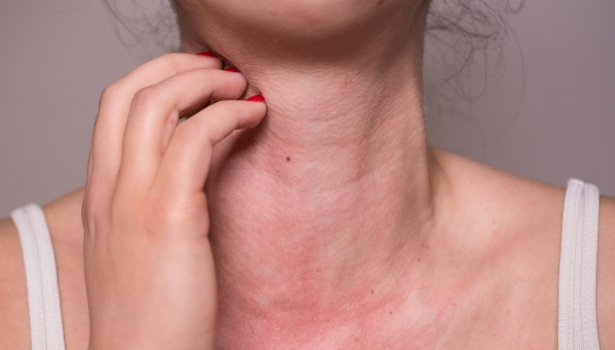Managing Skin Allergies in Spring: Tips for a Comfortable Season
As spring arrives with its warmer weather and blooming flowers, it brings with it a fresh burst of life. However, for many, this beautiful season also marks the beginning of skin allergy flare-ups. Pollen, increased outdoor activities, and changing temperatures can all contribute to skin irritation and allergic reactions. Understanding the triggers and knowing how to protect your skin can help you enjoy the season without discomfort.
Common Causes of Spring Skin Allergies
Spring is a prime time for allergens, and those with sensitive skin are often the first to notice the effects. Here are some common culprits behind springtime skin allergies:
- Pollen: As plants start to bloom, they release pollen into the air, which can trigger allergic reactions not only in the respiratory system but also on the skin. Direct contact with pollen can cause itching, redness, and hives, particularly in those with seasonal allergies.
- Sun Exposure: With longer days and warmer weather, more people spend time outdoors. However, after a winter of reduced sun exposure, your skin may be more sensitive to UV rays, leading to sunburn or photosensitivity reactions.
- Insect Bites: Spring also marks the return of insects like mosquitoes and bees. Bites or stings from these insects can cause localized allergic reactions, resulting in redness, swelling, and itching.
- Sweat and Heat: As temperatures rise, sweating becomes more common. For some, sweat can irritate the skin or mix with environmental pollutants, leading to rashes or heat-related skin issues.
- Contact with Irritants: Spring cleaning often involves the use of cleaning products and gardening, both of which can expose your skin to chemicals and plant oils that may cause contact dermatitis.
Symptoms of Spring Skin Allergies
The symptoms of skin allergies can vary depending on the allergen and your individual sensitivity. Common signs to watch for include:
- Redness: Inflamed, red patches of skin are often the first sign of an allergic reaction.
- Itching: Itchy skin is a hallmark of many allergies, and scratching can lead to further irritation.
- Hives: Raised, red welts that appear suddenly can be a response to allergens like pollen or insect bites.
- Dryness: Allergies can cause your skin to become dry and flaky, particularly if you’re also dealing with respiratory symptoms.
- Swelling: In some cases, allergic reactions can cause localized swelling, especially around the eyes or on the face.
How to Protect Your Skin During Spring
Managing skin allergies during spring requires a combination of preventative measures and effective treatments. Here are some tips to keep your skin healthy and comfortable:
1. Moisturize Regularly
Keeping your skin well-hydrated is crucial, as dry skin is more prone to irritation and allergic reactions. Choose a fragrance-free, hypoallergenic moisturizer and apply it daily to maintain your skin’s barrier.
2. Limit Pollen Exposure
Try to minimize your exposure to pollen by staying indoors during peak pollen times (usually early morning and late afternoon). When you do go outside, shower and change clothes afterward to remove any pollen that may have settled on your skin or hair.
3. Use Sunscreen
Protect your skin from UV rays by applying a broad-spectrum sunscreen with at least SPF 50 whenever you go outside. Choose a formula that is designed for sensitive skin to avoid further irritation.
4. Choose Gentle Skincare Products
Switch to gentle, fragrance-free skincare products to reduce the risk of contact dermatitis. Avoid harsh soaps, exfoliants, and chemicals that can strip your skin of its natural oils and cause irritation.
5. Wear Protective Clothing
When gardening or spending time in areas with a lot of vegetation, wear long sleeves and gloves to protect your skin from plant oils, insect bites, and other potential irritants.
6. Stay Cool and Dry
If you’re prone to heat-related skin issues, try to stay cool by wearing breathable fabrics and taking breaks in the shade. After sweating, cleanse your skin to remove sweat and prevent clogged pores.
Treatment Options for Spring Skin Allergies
If you do experience a skin allergy, there are several ways to soothe your symptoms:
- Antihistamines: Oral antihistamines can help reduce itching and swelling from allergic reactions.
- Topical Corticosteroids: These creams or ointments can be applied directly to the skin to reduce inflammation and itching.
- Cold Compresses: Applying a cold compress to the affected area can provide immediate relief from itching and swelling.
- Calamine Lotion: This soothing lotion can help reduce itching and dry out oozing or weeping from allergic rashes.
When to See a Doctor
While most skin allergies can be managed with over-the-counter treatments, it’s important to see a doctor if:
- The rash is widespread or severe
- You experience difficulty breathing, which could indicate a more serious allergic reaction
- Over-the-counter treatments do not provide relief
- You develop blisters, open sores, or signs of infection
Conclusion
Spring can be a challenging time for those with skin allergies, but with the right precautions, you can minimize your symptoms and enjoy the season. By understanding your triggers and taking steps to protect your skin, you’ll be better equipped to handle whatever spring throws your way. And remember, if your symptoms persist or worsen, consult a healthcare professional for personalized advice and treatment.
Book your next appointment with us here | Phone (06) 877 7476 | Email beauty@andreas.co.nz

